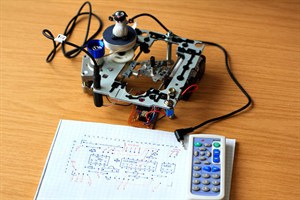Uploaded
Submitted by: dsvilko Project Website: https://www.picaxeforum.co.uk/showthread.php?17248-Motorized-macro-rail-on-the-cheap
Uploaded
Submitted by: dsvilko Project Website: https://www.picaxeforum.co.uk/showthread.php?17248-Motorized-macro-rail-on-the-cheap
I love macro photography and as anyone who has ever tried it will know, extremely thin depth of field (here we are often talking about 0.1mm and below) can be a real problem as the object we are photographing is usually significantly larger. The higher the magnification you use the less of the photo ends up in sharp focus.
This problem is typically solved by taking multiple photos with a slightly different focus point and later combining them to produce the final image where everything of importance is in focus.
One such software is the excellent Zerene stacker that will do all the work for you. You still need to take a bunch of photos of the same object that differ only in the focus point - and by 'bunch' I mean sometimes more than 50! For that reason I went to design an automatic macro rail that can very precisely move a small object back and forward a few centimeters. The macro rail had to be able to:
I actually managed to do this utilising only the parts I already had in the house (so it didn't cost me a penny while similar rails can be bought for close to $500!).
All I needed was an old, broken DVD-ROM drive (for a very nice rail it contains), a unipolar stepper motor (from an ancient 5.25" floppy drive - remember those?), the Picaxe 08m, and a few standard electronic components.
Watch the video to see the result.
Share